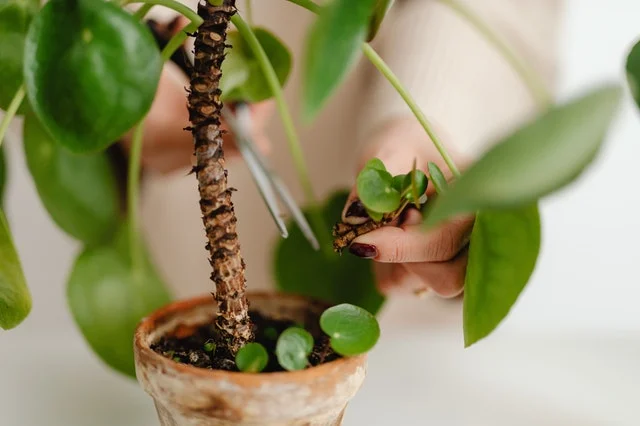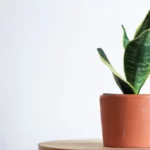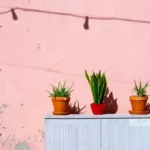Dropping in a Chinese money plant is a serious health concern to any loving owner. You need to conduct immediate investigations for the probable causes of drooping upon noticing. Giving the plant considerable attention gives you ease in growing it. Even so, you might run into problems if all needs are not being met.
Often, the plant does not like shifts in locations. It gets cranky, and it may take days to recover from the stress. Supposing there is completely no humidity in the air around the Chinese money plant, the ones beautiful round pancake leaves suddenly can be curly.
In this article, we elaborate on some of the reasons your plant is showcasing drooping signs. Let’s get cracking!
Table of Contents
Chinese Money Plant Drooping Leaves
Several reasons can lead to drooping of the plant. To help you identify the actual cause of the drooping in the plant, consider the following checklist questions:
Did You Neglect or Forget Watering?
Confirm the plant’s level of soil dryness, and whether the leaves’ stiffness is lost, then probably the plant is thirsty.
In case you have taken long before watering the plant, it’s wise to use a toothpick to aerate the soil to avoid improper channeling of water that could be leading to insufficiency in its supply to the roots.
Supposing the Chinese Money Plant has not been relocated yet shows the above symptoms, consider watering it.
Another way to determine the plant’s need to be watered is through comprehending the pot’s weight when dry and when wet. A wet pot is heavier than a dry pot (not watered); whenever you feel the pot is light even before seeing some other plant indications, consider giving it a sip.
Is Dropping in the Chinese Money Plant After Repotting?
Dramatic dropping in the plant after repotting is a problematic situation due to transplant stress. It follows with leaf loss.
In case roots are constantly disturbed during the repotting procedure or poorly removed from the initial pot, it might result in malfunctioning the roots. The effect could cause the roots’ water absorption to alter, thus drooping in the money plant.
The solution to this issue is to observe the repotting process requirements. Increase the pot’s size to accommodate the entire root system as it will find its way in readjusting in its new soil after backfilling. During the repotting process, do not loosen the compactly packed or bound roots.
Considering that the Chinese money plant is unlikely to survive after repotting, put it in water. It will refresh the plant giving it a conducive environment to recover and grow new roots.
Was The Plant Shocked, Moved, Or Shipped?
If other of the plant’s needs are being met yet the plant shows stress symptoms, give it the time it can likely recover by itself. Most houseplants do not like change; consider giving the plant days to weeks and monitor the process.
Are There Pests in the Plant?
Pest infestation is one hazardous threat to many interior plants. The pests damage the foliage through sap-sucking of the juicy, plump leaves, causing dehydration that can cause the plant’s wilting. These pests include scale, spider mites, thrips, fungus gnats, and mealybugs.
Other than seeing the pests, you might notice irregular yellowing in the leaves or leaf loss. To manage such occurrences, maintain underneath leaf checks along the stem. Set apart infested plants and do away with the pests by recurrently treating them.
Are You Over Watering the Plant?
Both under-watering and overwatering can result in drooping in the plant. The best way to determine if the plant is under-watered is to examine its roots and soil. Is the soil overly wet? Are there signs of the roots rotting?
If the condition of your plant agrees with the above questions, consider taking immediate action. The health condition of the plant might deteriorate if you ignore the situation. Below is how to handle an overwatered plant.
Carefully remove the plant from the pot and check for any dark/brown roots. Suppose there are healthy roots, white or light brown. Rinse the roots off the old soil and repot the plant in a new pot with enough drainage holes after pruning off the rotten roots; if they are many, the plant might not survive.
Lightly moisten the soil, placing it in high humidity with moderate temperature and lighting. Keep the soil in check every one or two days for about six weeks.
Low Light
Low light indirectly causes the plant to wilt due to overwatering through; deterred growth, limited water evaporation, low water usage, and prolonged wet soil. To prevent rotting and eventually drooping, carefully relocate the money plant to where there is bright indirect light.
Please do not place the plant directly on the light; it will scorch, interfering with the leaf’s green, healthy appearance.
Are Drafts and Temperature Causing Dropping in Your Chinese Money Plant?
Sudden temperature fluctuations or cold drafts can cause severe drooping. Exposure of the plant to temperatures below thirteen degrees centigrade, you will see it drooping. Keeping the plant to an air conditioning vent or draft window still can cause drooping.
In case you discover these occurrences early, keep the plant cozy; it will recover. Ensure proper care far from any drafts that might cause the situation to repeat.
Is Old Foliage Causing Drooping?
Generally, as the plant grows, it will have older foliage drooping, especially from the stem parts, after turning a little yellow. If the rate at which these old leaves droop is relative to the rate of new leaves replacing them, do not worry.
This sort of happening occurs in autumn as temperatures and light drop in an effort for the plant to retain some health for the coming winter.
Conclusion
I believe this article has been of great essence in helping you to comprehend the determinants for your Chinese money plant state of health.
Nevertheless, do not assume that average growth can cause drooping in your plant. Cautiously check for acute symptoms, most especially pests and water issues.
Husky, CC0, via Wikimedia Commons
Photo by Karolina Grabowska from Pexels



